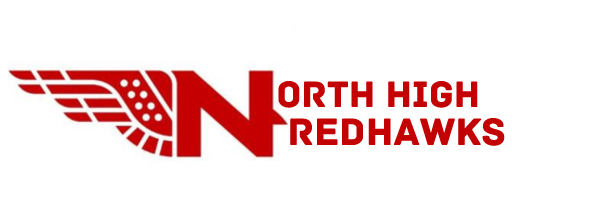Standard Reference Grading
October 1, 2021
The start of next school year, 2022-2023, is already making waves as it is confirmed to bring with it a new grading system for Wichita Public School’s high schools. This new method, already in use in our elementary, middle, and some high school classes, is referred to as Standard Reference Grading (SRG) and utilizes proficiency scales to document student progress.
The goal of Standard Reference Grading is to more accurately portray what students understand in the classroom. It would also, to quote Lara Engle, an English teacher here at North, “provide more consistency than that of our grading system right now.”
SRG is based not on points, but as previously mentioned, on proficiency scales that range from 1 to 4. Both a one and two are considered below the target area, with a three as grade level, and a four being considered representative of above and beyond. These numbers are reached through assessments and assignments showing target understanding.
These numbers are replacing the percentages you would see on your class grade now, rather than the letter representation. Each level has a letter conversion that will be displayed on your Synergy and can be used to calculate GPA. The conversion numbers go as followed:
3-4 = A
2.5-2.99 = B
2-2.49 = C
1.01-1.99 = D
0.00-1.00 = F
Since letter grades are still being resourced, transcripts for college will not change.
The SRG system also utilizes two types of grading: academic scales and employability scales. The academic scales are used for learning targets in content classes such as core classes and electives. The employability scale focuses on more soft and social skills such as communication, participation and a student’s ability to fix mistakes. The employability scale, while shown on Synergy, will not affect a student’s academic grade in content classes and will instead be more prominent in classes such as Advocacy, intervention classes, and proctoring.
To avoid dumping an entire new grading system onto students and teachers who are used to our grading system now, the school district plans to use a stairstep approach to implement Standard Reference Grading. So, while the new grading system is being used in high school’s next year, it will likely only affect freshmen and entry level classes. High schoolers this year may not experience Standard Reference Grading in high school at all, but it’s more likely that their classes will have a mix of SRG and our grading system now.
“In general, I think that having the standards be the center of everything is a good idea. I think it helps everyone understand what we’re supposed to be learning and what the point is to the stuff we do.” Mrs. Engle is already preparing to use Standard reference Grading in her classroom and expressed encouragement of the new grading system, with a note of understanding of how the transfer will likely be a struggle for many. She doesn’t believe that there will be a major impact on our classrooms and hopes that the new grading will help to motivate students.
Erin Hernandez, a junior at North, however, has a much different opinion on Standard Reference Grading.
“A lot of kids already struggle hitting the mark with the current system,” They reasoned. “They’re just going to make the kids feel more…bad. I mean- think about it. You have to hit this mark, or you don’t make it.” Erin doesn’t have any experience with SRG, but they don’t think it will be beneficial in our classrooms. His beliefs are that it’ll only make students struggle more in class and stress over making it to the specific targets that are required.
To learn more about Standard Reference Grading, please visit Standards-Referenced Grading / Standards-Referenced Grading (usd259.org)




